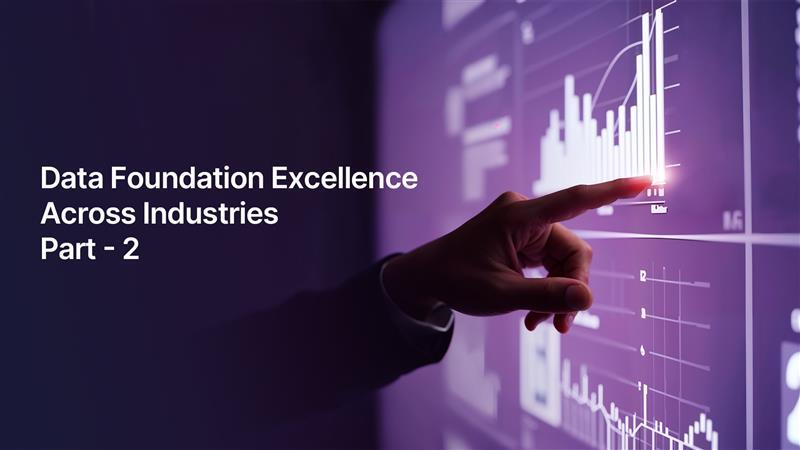Real-Time Data Streams: How Banks Are Winning the War Against Fraud

In today’s hyper-connected financial ecosystem, fraud no longer unfolds over days or even hours. It happens in milliseconds. Banks must now defend against increasingly sophisticated threats in real time, across multiple channels, time zones, and customer journeys. Traditional batch-oriented fraud detection systems, while once sufficient, are now outdated relics of a slower era.
To stay ahead of fraudsters, modern banks are embracing real-time data streams. These streaming architectures monitor transactions, analyze behavior as it happens, apply predictive models instantly, and enable split-second decisions that protect customers and institutions alike.
The Rise of Real-Time Fraud Detections
Fraud schemes today are dynamic, fast, and often cross-channel in nature. Whether it's synthetic identity creation, coordinated money mule rings, or phishing attacks exploiting API endpoints, the threat landscape is evolving daily. Here’s why real-time detection has become non-negotiable:
- Speed of Attack: Fraudsters use automation to strike multiple accounts simultaneously.
- Channel Complexity: Fraud now spans web, mobile, and digital wallet channels.
- Adaptive Tactics: Static rules are easy to bypass; adaptive learning is critical.
- Customer Expectations: Users demand real-time approvals and protection.
Traditional fraud tools, which analyze data hours or days after the fraud has taken place, cannot keep pace. This is where streaming data architectures change the game.
Anatomy of a Real-Time Fraud Detection Platform
At the heart of a real-time fraud prevention system is a continuously flowing data pipeline. Let’s break down how banks are designing these architectures:
1. Ingestion Layer: Capturing Every Signal
Banks capture vast volumes of real-time data from a variety of sources:
- Mobile Banking Apps & Online Portals: Login attempts, device metadata, and navigation patterns.
- Payment Systems: Credit/debit card swipes, ATM withdrawals, POS terminals, wire transfers.
- APIs: Open banking transactions, third-party fintech integrations.
- Call Centers: Voice biometrics, customer support interaction logs.
- KYC & Customer Master Updates: Changes in user profiles, location, or linked devices.
2. Stream Processing Layer: Real-Time Intelligence Layer
Stream processors, such as Apache Flink, Spark Structured Streaming, or Kafka Streams apply advanced logic to incoming data:
- Behavioral Analytics: Comparing current transactions to historical user behavior to detect anomalies.
- Geo-Temporal Patterns: Identifying impossible travel or distance barriers (e.g. a login from India followed by a transaction in London within 2 minutes).
- Cross-Channel Correlation: Tying together activity from the web, mobile, and call center to detect suspicious orchestration.
- Feature Enrichment: Calculating device reputation, velocity of transactions, and risk scores in real time.
This layer powers stateful streaming, where the system “remembers” context over time windows (e.g. login attempts in the last 5 minutes).
3. Model Execution: AI at Streaming Speed
Machine learning models that are trained offline on historical data are deployed in real-time scoring services:
- Isolation Forests detect outliers easily.
- LSTM-based models identify sequential behavioral anomalies.
- Graph Neural Networks uncover complex fraud rings and money mule networks.
These models are invoked via low-latency REST or gRPC APIs, ensuring decisions are made in <300ms.
4. Action Layer: Response at Machine Speed
Once risks are scored and classified, the Action Layer ensures the right response is triggered instantly, balancing security with seamless customer experience. Decisions are automated at scale, with actions tailored to the risk level:
- Low-risk transactions are approved instantly.
- Suspicious transactions may trigger step-up authentication (e.g. OTP).
- High-risk patterns can result in account holds or alerts to fraud operations teams.
This ensures both protection and user experience are preserved.
Real-World Applications Across Financial Services
Retail Banking
Retail banks face a barrage of attacks including card-not-present fraud, account takeovers, and phishing-based credential theft.
- By using real-time behavioral biometrics, banks can differentiate between a customer and a fraudster even with valid credentials.
- Fraud models trained on historical transaction graphs flag anomalous financial behavior across peer groups.
Corporate & Commercial Banking
Corporate fraud often involves insider manipulation, large-scale wire fraud, or sophisticated phishing scams.
- Treasury operations are monitored for abnormal patterns, such as unusual SWIFT instructions or beneficiary changes.
- Real-time systems provide early warnings before large disbursements are processed.
FinTechs & NeoBanks
These digital-native institutions face unique challenges like fake sign-ups, synthetic identities, and app-based fraud.
- Real-time correlation of device ID, app version, and behavior can prevent bots from bypassing onboarding.
- Streaming KYC checks flag suspicious changes during live sessions.
Architecture Overview
Below is a simplified architectural representation of a real-time fraud detection platform:

Figure: Real-Time Fraud Detection Platform Architecture
Quantifiable Gains from Real-Time Fraud Detections
|
Metric |
Batch-Based Legacy |
LReal-Time Streaming |
|
Detection Latency |
1–2 hours |
<1–2 seconds |
|
False Positive Rate |
15–20% |
<5% |
|
Customer Complaints (fraud) |
High |
Drastically Reduced |
|
Investigation Time |
2–3 days |
Real-Time Dashboards |
|
Cost of Fraud |
Multi-million USD |
Significant Savings |
Strategic Imperatives for Banks
Banks adopting real-time fraud intelligence are upgrading tools and rethinking organizational design:- Merging AML and fraud operations into unified platforms with shared intelligence.
- Building fraud-as-a-platform capabilities, enabling lines of business to plug into a central decision engine.
- Embedding fraud signals into CX flows, allowing risk-aware experiences without customer disruption.
In a world where digital speed defines both opportunity and threat, real-time streaming is a necessary technology upgrade. By adopting real-time fraud detection systems powered by streaming data, AI, and advanced behavioral analytics, banks can finally shift from reactive defense to proactive prediction.
The war against fraud is won in the stream.



